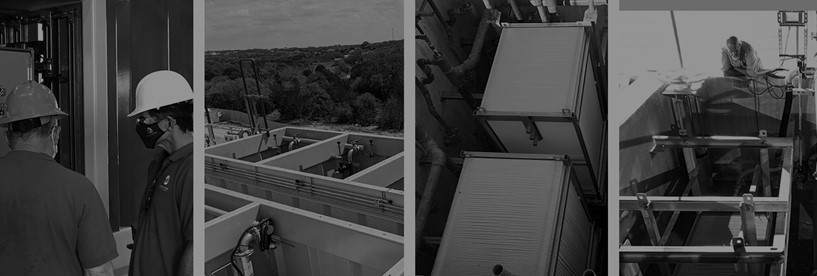
Modular MBR Systems
Integrated Water Services
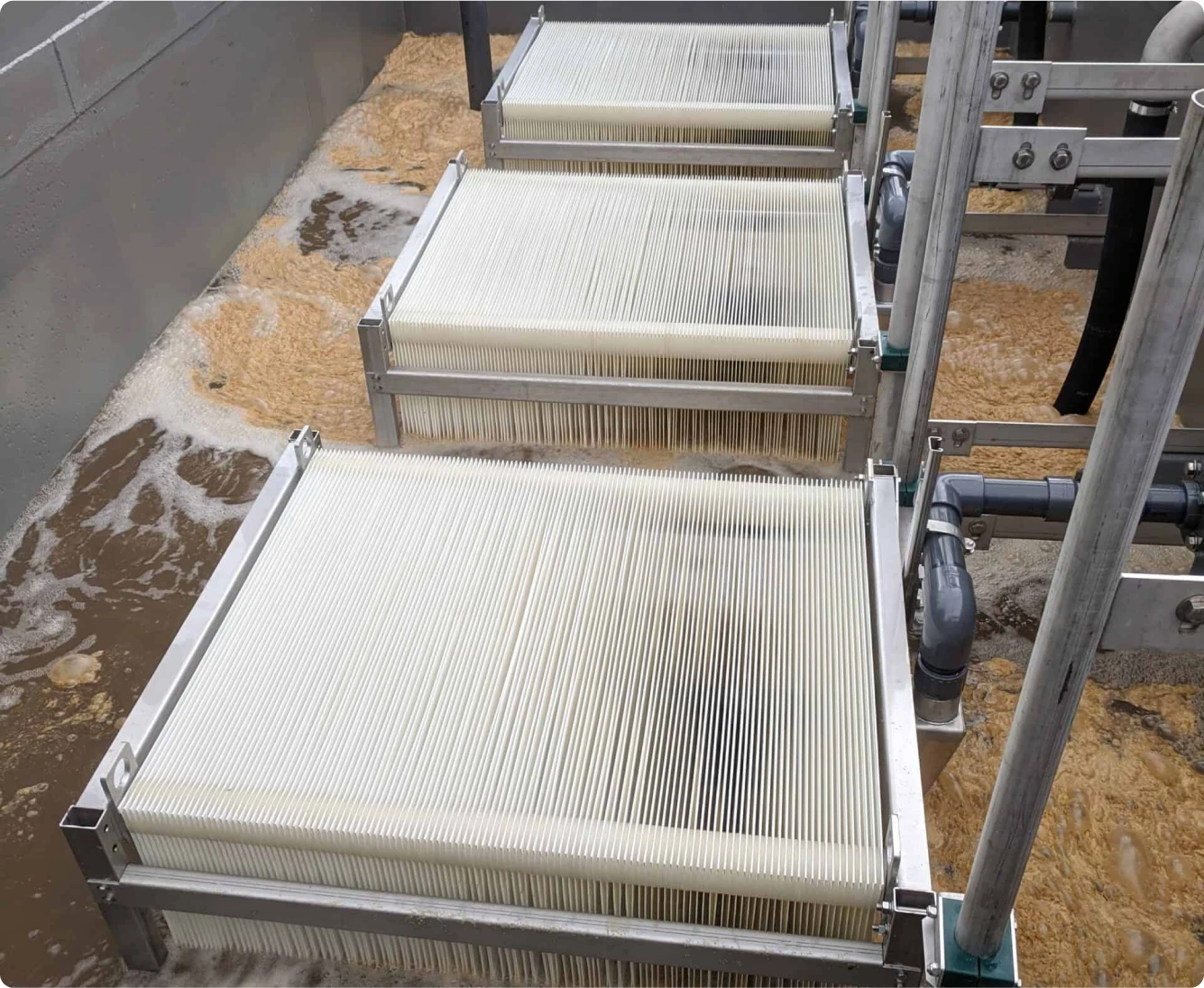
As environmental regulations become increasingly stringent, Membrane Bioreactor Technology enables developers to treat wastewater to meet even the strictest permit regulations. Membrane bioreactors for wastewater treatment offer several benefits, including:
- Treated wastewater effluent can be used in reuse applications.
- Remote facilities can be constructed in decentralized locations.
- Cost-effective in flow ranges from 7,500 GPD to 2 MGD.
- Mobile units available, allowing for temporary wastewater treatment plant bypass.
In general, membrane bioreactor systems are comprised of similar components, just scaled to match the intended flow rate of the facility. Wastewater treatment systems have:
Headworks Screen
Removes coarse solids such as rags, sticks, wood, and other larger materials that clog or disrupt the biological wastewater treatment process.
Equalization Tank
Normalizes the otherwise inconsistent flow rate of a service area, which is essential for efficient biological treatment and effective wastewater management.
Treatment Basin
Has zones for anoxic and anaerobic processing and houses the membrane filtration units. This submerged MBR process optimizes the treatment of organic pollutants and ensures high wastewater quality.
Sludge Processing
A holding tank for biological processes and dumpster for landfill leachate management. This contributes to an effective industrial wastewater treatment system.
Effluent Discharge
Chemical contact tanks, reuse storage tanks, and/or discharge pumps for treated wastewater. This supports sustainable wastewater management practices.
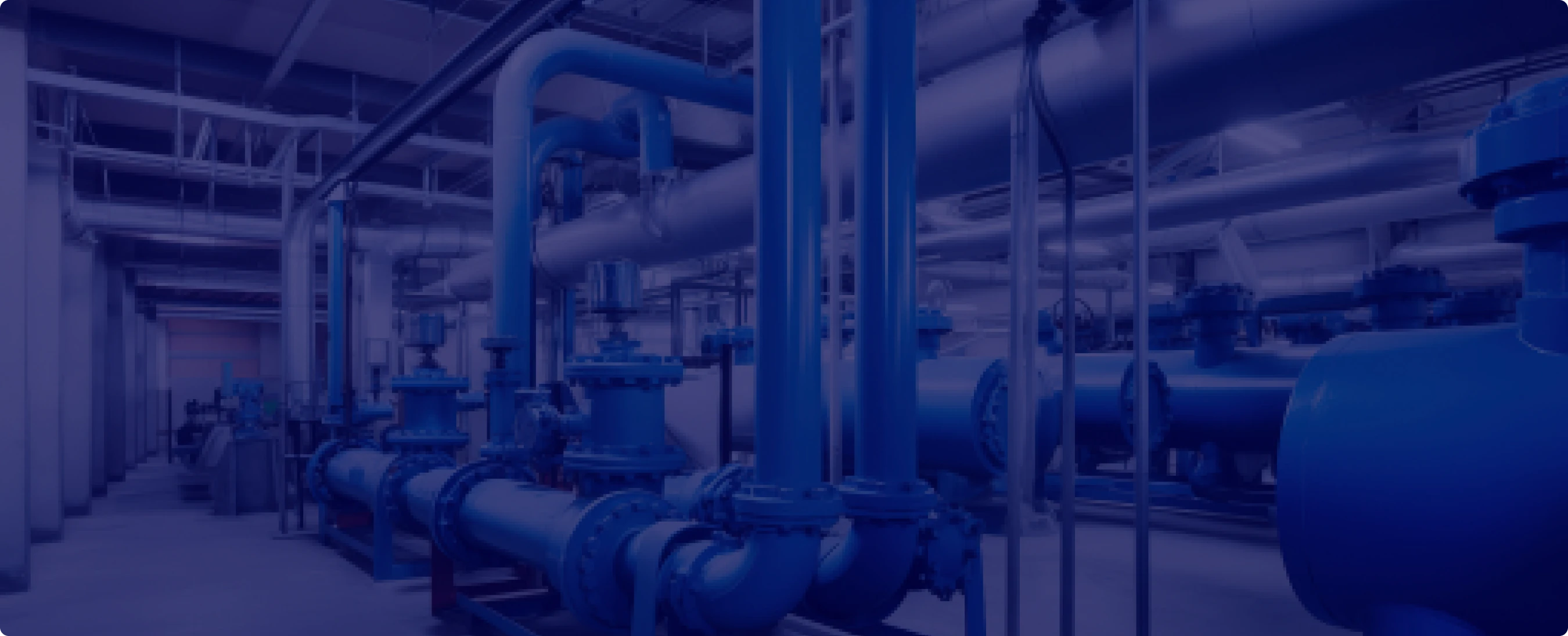
MBR plants are rapidly gaining popularity for efficient and sustainable wastewater treatment in private communities and municipalities alike. IWS specializes in designing and constructing advanced membrane bioreactor systems, utilizing all major membrane technologies. Our expertise includes flat sheet, hollow fiber, and ceramic membrane systems, ensuring optimal performance and tailored solutions for diverse wastewater treatement needs.
Sustainability
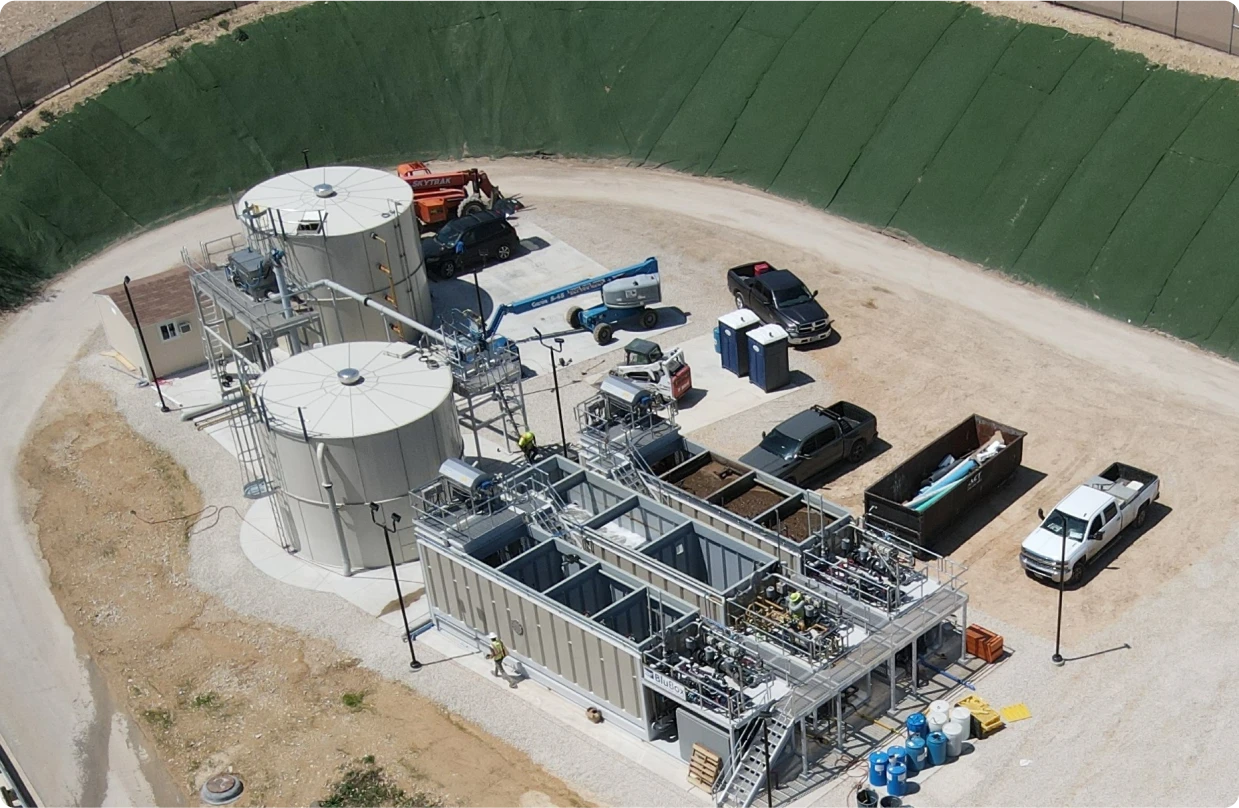
IWS is experienced in designing and constructing MBR wastewater treatment systems utilizing the aforementioned technologies. We provide clients with a customized solution based on:
- Flow rates and nutrient loading.
- Phasing of future development.
- Local and State regulations.
- Existing site conditions.
- Anticipated treated effluent limits.
- Estimated cost of construction.

Selecting the right equipment package is essential in ensuring a project’s schedule, scope, and budget. IWS has the capacity to provide permitting and design/build services and is an industry leader. We have:
- Completed work across North America.
- Constructed facilities in both public and private sectors.
- Utilized MBR technologies for a wide range of reuse applications, including Title 22 reuse effluent standards.
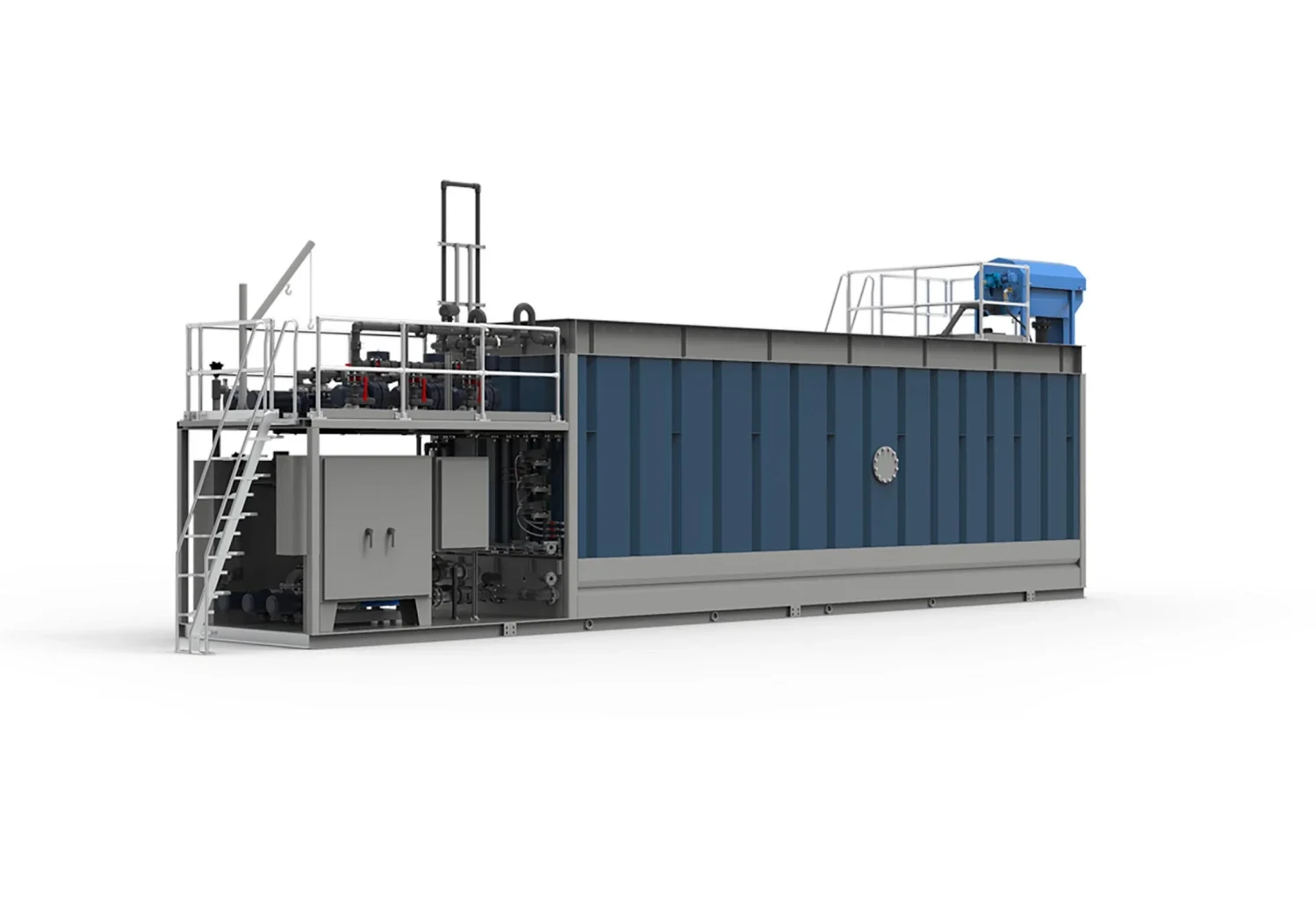
Want to explore the real world application of MBR technology?
Click here to view our latest MBR case studies.
Have inquiries about our MBR solutions?
Click here to Contact Our Experts.
Critical Components of MBR Systems
Membrane filtration is a crucial component of wastewater treatment. MBR systems use various types of ultrafiltration membrane filtration to ensure the highest quality of treated water.
Managing membrane fouling is critical to the operation of MBR systems. IWS employs advanced techniques to minimize fouling and extend the life of the membrane material.
MBR systems often utilize submerged membranes and ultrafiltration (UF) membranes, which enhance the efficiency and effectiveness of the wastewater treatment plant process.
The biological process within MBR systems, including the activated sludge process, ensures the breakdown of organic matter and the reduction of nutrient levels in the treated water.
Nutrient removal is a vital function of MBR systems, achieved through specialized membrane modules. This ensures compliance with environmental standards and the production of high-quality treated wastewater effluent.
MBR systems produce high-quality treated water suitable for various water reuse applications, contributing to sustainable water resources management.
Regular chemical cleaning of the membrane element helps maintain the efficiency of MBR systems and ensures long-term performance.
MBR systems are also used to treat landfill leachate and manage biomass effectively to ensure environmentally safe discharge.
Microorganisms’ role in membrane bioreactor systems is crucial for suspended solids concentration and overall effectiveness of the wastewater treatment plant process.